Shanghai Gengyun Industrial Co., Ltd
What is a Fiber Optic Patch Cord? Types of Fiber Optic Patch Cord
What is a fiber optic patch cord? Fiber optic patch cord (also known as fiber optic connector) refers to a fiber optic cable with connector plugs installed at both ends to achieve active connection of the optical path; one end with a plug is called a pigtail. Fiber optic patch cord (Optical Fiber Patch Cord/Cable) is similar to coaxial cable, but without the mesh shielding layer. The center is the glass core for light propagation.
In multimode optical fiber, the core diameter is 50μm~65μm, which is roughly equivalent to the thickness of a human hair. The diameter of the single-mode optical fiber core is 8μm~10μm. The core surrounded by a glass envelope with a lower refractive index than the core to keep the optical fiber inside the core. Outside is a thin plastic jacket to protect the envelope.
Features of Fiber Optic Patch Cord
- Low insertion loss;
- Good repeatability;
- Large return loss;
- Good inter-insertion performance;
- Good temperature stability;
- Strong tensile strength;
Types of Fiber Optic Patch Cord
Fiber optic patch cords can divided into common single-mode and multi-mode patch cords of silicon-based optical fiber according to the transmission medium, and other fiber optic patch cords such as plastic as the transmission medium.
According to the connector structure, it can divided into: FC patch cord, SC patch cord, ST patch cord, LC patch cord, MTRJ patch cord, MPO patch cord, MU patch cord, SMA patch cord, FDDI patch cord, E2000 patch cord, DIN4 patch cord, D4 patch cord and other forms. The more common fiber optic patch cords can also divided into FC-FC, FC-SC, FC-LC, FC-ST, SC-SC, SC-ST, etc.
Single-mode fiber: Generally, the fiber patch cord is yellow, and the connector and protective cover are blue; the transmission distance is longer.
Multi-mode fiber: Generally, the fiber patch cord is orange, and some are gray, and the connector and protective cover are beige or black; the transmission distance is shorter.
FC fiber patch cord
The external reinforcement method is to use a metal sleeve, and the fastening method is a screw buckle. FC connectors generally used in telecommunications networks. There is a nut screwed onto the adapter. The advantages are that it is reliable and dustproof, but the disadvantage is that the installation time is slightly longer. It generally used on the ODF side. FC jumpers is most used on the patch panel and is also used for optical terminals.
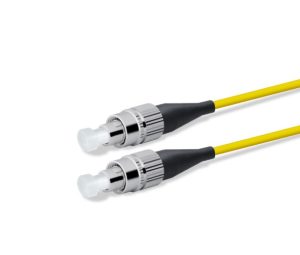
SC fiber patch cord
The connector that connects the GBIC optical module has a rectangular shell and fastened by a plug-in latch type without rotation. The SC connector directly plugged in and out, which is very convenient to use. The disadvantage is that it is easy to fall out. It is most used on router switches.
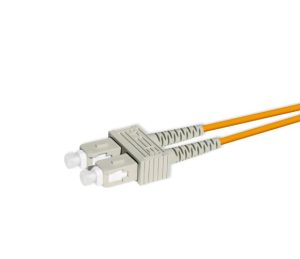
ST fiber patch cord
After the ST head is inserted, it fixed by a bayonet after half a rotation. The disadvantage is that ST fiber patch cord is easy to break; it commonly used in optical patch panels, with a round shell and a screw buckle for fastening. For 10Base-F connections, the connector is usually ST type.
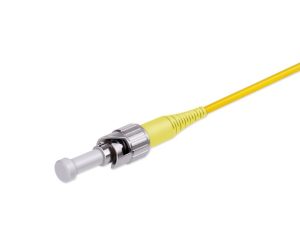
LC fiber patch cord
The connector that connects the SFP module made of a modular jack (RJ) latch mechanism that is easy to operate. The SFP optical module defaults to the LC fiber patch cord interface.
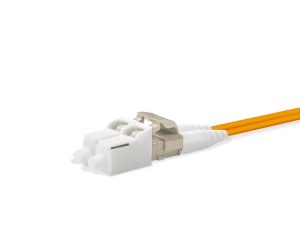
MT-RJ fiber optic patch cord
Square fiber optic connector with dual fiber optics on one end. MTRJ fiber optic patch cord consists of two high-precision plastic molded connectors and optical cables. The outer part of the connector is a precision plastic part, including a push-pull plug-in clamping mechanism. Suitable for indoor applications in telecommunications and data network systems.
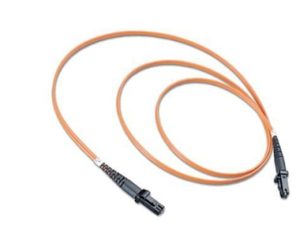
SC-ST single mode
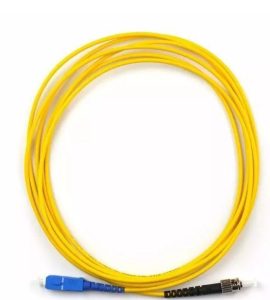
FC-SC single mode
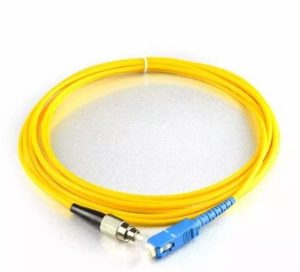
Dual LC multimode
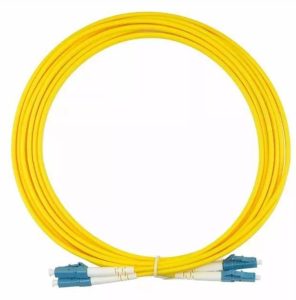
ST-ST single mode
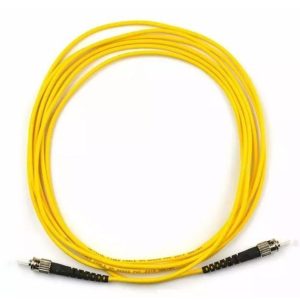
SC-SC single mode
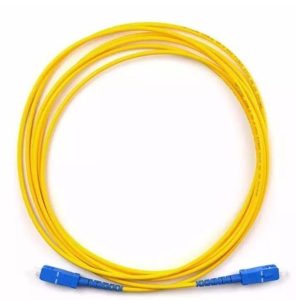
LC-SC single mode
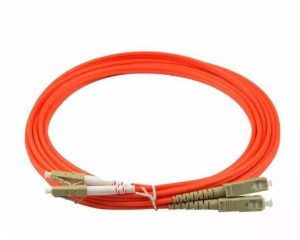
FC-FC single mode
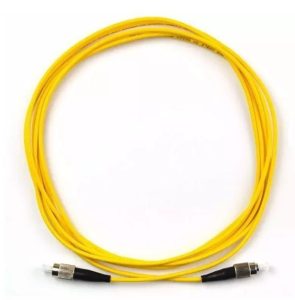
How to Choose Fiber Optic Patch Cord?
Fiber optic patch cords are mainly divided into the following three types according to the termination type: ST-ST, SC-SC, ST-SC.
According to the type of optical fiber, there are mainly two types: single-mode optical fiber and multi-mode optical fiber.
The length of the patch cord is 0.5m, 1m, 2m, 3m, 5m, 10m, etc.
According to the outer sheath material of the cable, it can be divided into ordinary type, ordinary flame retardant type, low smoke halogen-free type (LZSH), low smoke halogen-free flame retardant type, etc.
According to the fire protection level of the building and the fire resistance requirements of the material, the integrated wiring system should take corresponding measures.
When laying cables or optical cables in flammable areas and building shafts, flame retardant cables and optical cables should be used;
In large public places, flame retardant, low smoke, and low toxic cables or optical cables should be used;
Flame retardant wiring equipment should used in adjacent equipment rooms or handover rooms.
Precautions for using fiber optic patch cords
The receiving and transmitting wavelengths of the optical modules at both ends of the fiber optic patch cord must be consistent, that is, the optical modules at both ends of the optical fiber must have the same wavelength. The simple way to distinguish them is that the color of the optical modules must be consistent.
The optical fiber should not bent or looped excessively during use, which will increase the attenuation of light during transmission.
After using the fiber optic patch cord, the fiber optic connector must be protected with a protective cover. Dust and oil will damage the coupling of the optical fiber. If the fiber optic connector is dirty, it can be cleaned with a cotton swab dipped in alcohol, otherwise it will affect the communication quality.
- Before use, the fiber optic patch cord ceramic ferrule and ferrule end face must be wiped clean with alcohol and absorbent cotton.
- The minimum bending radius of the optical fiber is less than 30mm during use.
- Protect the ferrule and ferrule end face to prevent damage and contamination. Put on the dust cap in time after disassembly.
- Do not look directly at the fiber end face when the laser signal is transmitted.
- The damaged fiber optic patch cord should replaced in time when it is damaged by human and other force majeure factors.
- If there is an abnormal situation in the fiber optic network or system, the troubleshooting method can used to test them one by one. When testing or troubleshooting jumper faults, you can first do a continuity test, usually by using a visible laser pen to illuminate the entire optical fiber link. Or you can further use a precision optical fiber insertion loss and return loss meter to test its various indicators. If the indicators are within the qualified range, the jumper indicates normal, otherwise it is unqualified.
